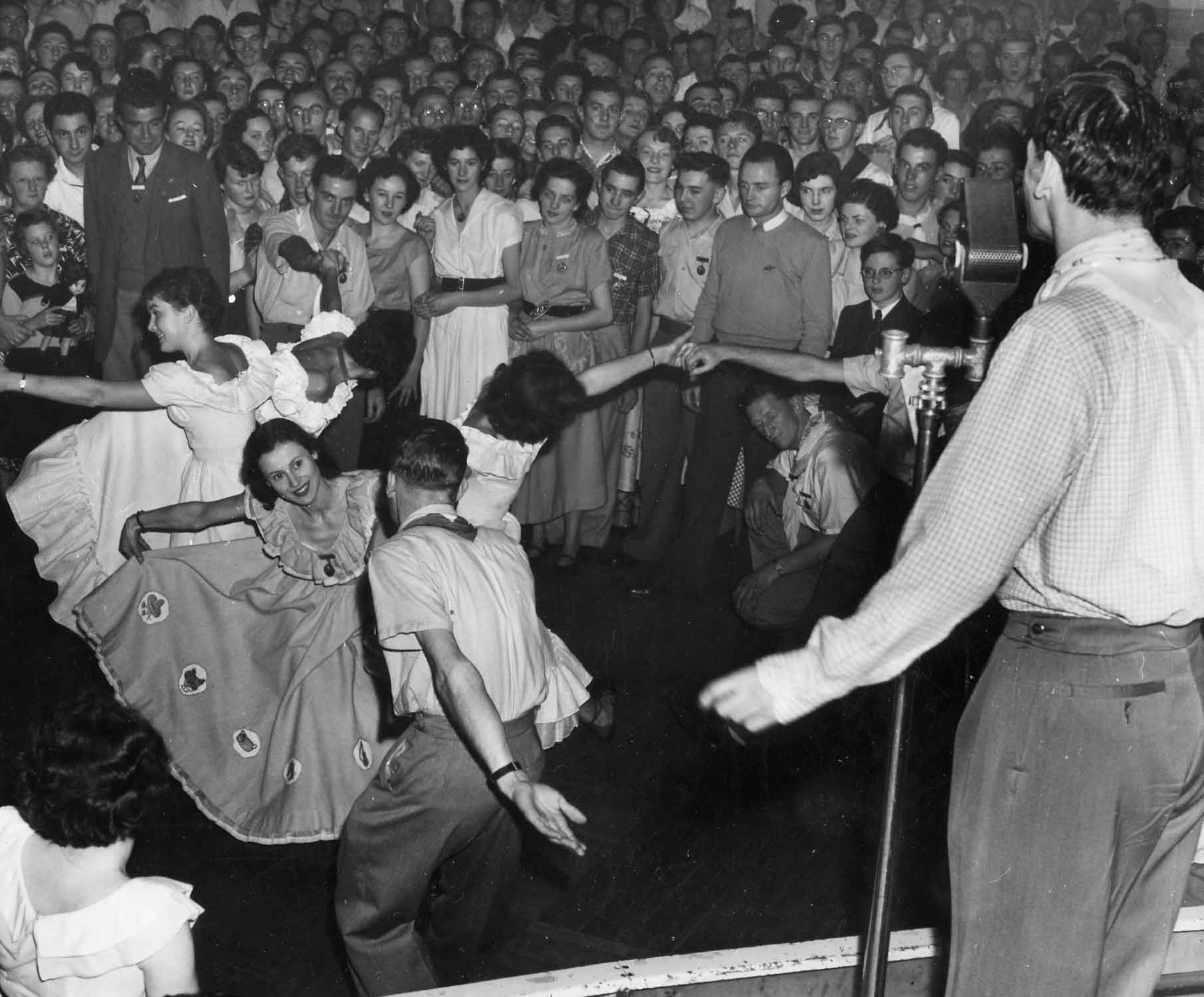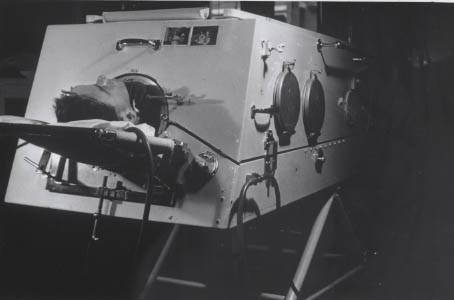


| |
|
|
Jim Vickers-Willis dominated the Australian Square Dancing boom of the 1950's. His calling was different, creating a popular style of square dancing that was unique to Australia (click to sample). His popularity was unparalleled - he was a great teacher. He called to many thousands of dancers at one time, and his square dances were broadcast on radio and also on early Australian television. At one time, Jim's 1 hour "Lets Go Square Dancing" Program on ABC 2 TV (produced by John Petrie) held the channel's #2 rating, behind "Sgt Bilko" - the program was also sold in the UK. Jim also did the first outside broadcast for Channel 7 Adelaide - a program televised from the Palais Ballroom in front of 1500 dancers. A few years later Jim appeared on Bert Newton's Tonight Show, on Channel 7 Melbourne. Australian square dancing was distinctive - although square dancing's origins were from America (itself based on traditional European dancing), more than half the square dances that became popular in Australia during the 1950's boom originated in Australia. This productivity was fueled in Melbourne by competitiveness of various square dancing camps - two in particular, the Jim Vickers-Willis and Bill McGrath camps. It was once said that "McGrath sounded like Footscray (salt of the earth) but attracted the Toorak crowd (the well-to-do), whilst Jim sounded like Toorak but attracted the Footscray crowd." Whilst Bill built up square dancing through the burgeoning Square Dance Clubs, Jim performed at the large public ballrooms which were broadcast on radio, and also on television. Rivalries developed as Jim, in particular, gained celebrity stature, and a huge public following. So, what was different about Jim's style of calling square dances? We believe Jim was popular because of his very particular style of square dance calling - a style that was uniquely Australian rather than American hillbilly - a style Jim called "Australian Hoedown" (click here to listen to Jim's unique calling in the 1950's to a very interesting remix of the American square dance classic, Alabama Jubilee). Jim's calling approach had a number of distinctive features:
Keeping it interesting but making it as uncomplicated and simple as possible was what Jim found to be a vital key in helping very large numbers of people to join in the square dancing. He kept it easy but interesting by creating variety – mixing 2/4 time tempo followed by 6/8 time, and using dance arrangements (rather than more and more complicated steps and movements) to keep the dancers interested. In the first two years of the square dancing boom, Jim's regular square dancers came to know about 100 singing calls - some of them knew them off by heart. He used these for dance arrangements. He’d do one round of a singing call then switch to one round of the next singing call and then the next. Often there were about six singing calls in the one bracket. This kept everyone on their toes - including the caller and the band - and created great variety and interest without requiring the introduction of more and more complicated steps and movements which made it hard for new beginners to join in. Jim also introduced a degree of sport into his square dancing. He used impromptu calls to challenge sets to pit their skills against the caller, with sets making mistakes being eliminated until the last set standing is declared the 'winner' - click here for 'An Impromptu' audio sample. His Australian audiences also had great fun playing "nine-pins", in which there is one extra man or woman in each set, and a type of musical chairs occurs, with one person missing out and eventually being eliminated - click here for 'Ninepins' audio sample. These activities were especially appealing to the 'sports mad' Australians. Jim produced many quality square dancing resources - resources that help beginners to learn whilst also challenging the more advanced dancers. If you have an interest in nostalgia, we suggest you take a look around the Australian 1950's Square Dance Archive tab of this site, which showcases original square dancing resources produced in Australia by Jim and many others from the boom era.There are also over 90 live and studio recorded square dances in the tab titled Jim's Singles Catalogue. The Australian Square Dance Band: Jim's success in square dancing entertainment is only the tip of the iceberg to Jim’s extraordinary life story, which took a dramatic twist when, at the height of his square dancing popularity, he contracted polio and was placed into an iron lung life support system. Jim’s fight to escape the iron lung and go on to live a long and fulfilled life despite post-polio paralysis, is an inspiring human interest story. Click here to find out more about Jim's Story. |
|
Contact
Us | Privacy Statement
Home |
Jim's Story | Australian Square Dancing
All materials on this site are Copyright©Vickers-Willis Corporation, 2023